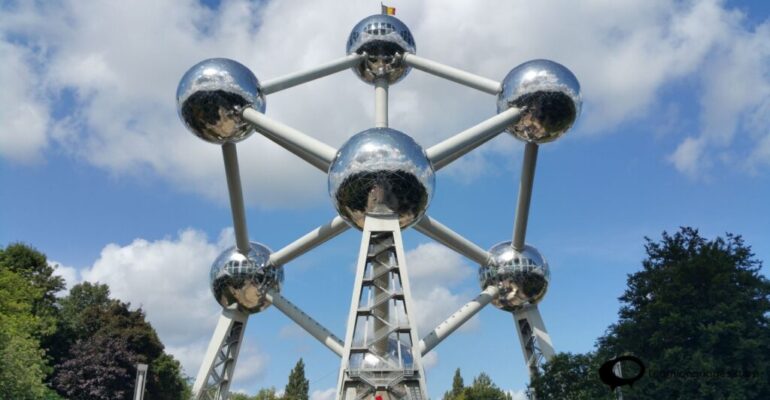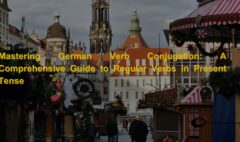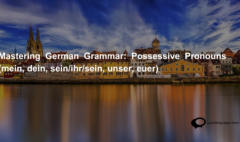BELGIUM: DON’T GET TONGUE-TIED
BELGIUM: DON’T GET TONGUE-TIED
Belgium’s a wonderful little country.
Similar in size to the state of Maryland, and with 11 million people living there, our favorite diminutive country has brought many joys to the world. Belgians through history have invented such things as the beloved comic strip Tintin, the saxophone, and a whole host of culinary delights including French fries, pralines, and waffles.

But, in Belgium, what language do they speak?
It’s a trick question: there are more than one!
The answer is that Belgium has three official languages.
The first and most prevalent is Flemish, which may be thought of as the Belgian variety of Dutch and is spoken by little under 60% of the population.
Most people are familiar with French, due to Agatha Christie’s fantastic Francophone investigator Hercule Poirot. Approximately 40% of Belgians speak French as their first language.
As a result, German is the third and last official language of Belgium.
That’s a lot to stuff into one nation, isn’t it? Let’s look at how everything fits together.

Why is it that Belgium has so many languages?
Belgium is divided into two cultural and linguistic groups: French-speaking Walloons and Flemish-speaking Flanders residents.
panish, Dutch, and French kings have dominated Belgium over the years, resulting in the differences between the two peoples.
The Belgian Revolution of 1830, in which the Flemish and Walloon groups revolted against their Dutch masters, resulted in the country’s independence, and the Kingdom of Belgium was established in 1831, combining the two linguistic groups.
Following the end of World War I and the Treaty of Versailles, the German-speaking territory of Eupen-Malmédy was annexed by Belgium from Germany. This brought thousands of German speakers under Belgian rule.

How Are Belgium’s Languages Distributed Across the Country?
Flanders, Wallonia, and the Brussels Capital Region are the three recognized regions of Belgium. Wallonia contains the fourth community that speaks German.
Let’s have a look at how it’s divided.
The country is divided in half by an internal boundary that runs from east to west. This establishes the Flanders area to the north, with a population of 7 million Flemish speakers, and the Wallonia region to the south, with 3.6 million Belgian French speakers. Flemish and French are the only official languages in these localities.

The Brussels Capital Region is a bilingual enclave inside Flanders that is home to 1.2 million people, or more than 10% of the population, and where French and Flemish are co-official languages.
The German-speaking community, also known as Eupen-Malmédy, is located on Wallonia’s extreme eastern border with Germany. Eupen-Malmédy is home to around 70,000 inhabitants.
Despite the fact that French and Flemish have equal formal status in Brussels, 80% of its population speak French on a daily basis. In the capital, both French and English are often used as linguae francae. This is primarily owing to the vast number of individuals who live there and work at the various European institutions situated in Brussels, where English and French are the dominant languages.
sn’t the division causing issues?
In a way. Language politics is a major cause of contention in Belgium, with both French and Flemish speakers claiming that the government do not prioritize their language.
The separation between French and Flemish-speaking populations is defined by federal legislation.
Despite being legally bilingual, Brussels has become majority French-speaking due to its key position in international affairs. Foreigners are more likely to speak French than Flemish.
As the capital has grown, so has the number of French speakers outside the city limits, into neighboring Flanders. This can cause friction between French and Flemish speakers, who both desire to speak their own tongues.

Three Tips for Choosing a Language in Belgium
In Flanders, never speak French to the natives.
Never speak Flemish to Wallonians.
When in doubt, begin the conversation in English (especially in Brussels) and then inquire in which language you should continue.
The most noticeable distinction is in the numbers!
Most French students have most certainly spent years happily practicing lightning-quick mental arithmetic in order to retain the intricate French numbering system, which includes numbers such as soixante-dix, quatre-vingt-huit, and even quatre-vingt-treize. That is quite an accomplishment!
Except that the numerals in Belgian French are different.
… Quoi?
That’s correct. For everything beyond 60, Belgian French has abandoned the vigesimal numbering system (i.e., the system based on the number twenty) in favor of the extremely basic scheme below:
Number France Belgium
60 soixante soixante 70 soixante-dix septante 80 quatre-vingt huitante 90 quatre-vingt-dix nonante

Here are two minor lexical distinctions in Belgian French:
S’il vous plaît is quite prevalent in Belgian French, although not in the way you may imagine.
It still means’please,’ but it is also a synonym for the French voilà. when an example, a waiter may say s’il vous plaît when he brings your dinner to your table.
As the Flemish phrase alstublieft (please) is used in the same way, this is an excellent illustration of how Belgian French has borrowed from Flemish.
It me goûte, literally, that it tastes delicious, is how Belgians express their liking for something.
This differs from the French expression, ça me plaît, which means something pleases me
Learn Languages Store
Vashi,
Email: services@learnlanguages.store










